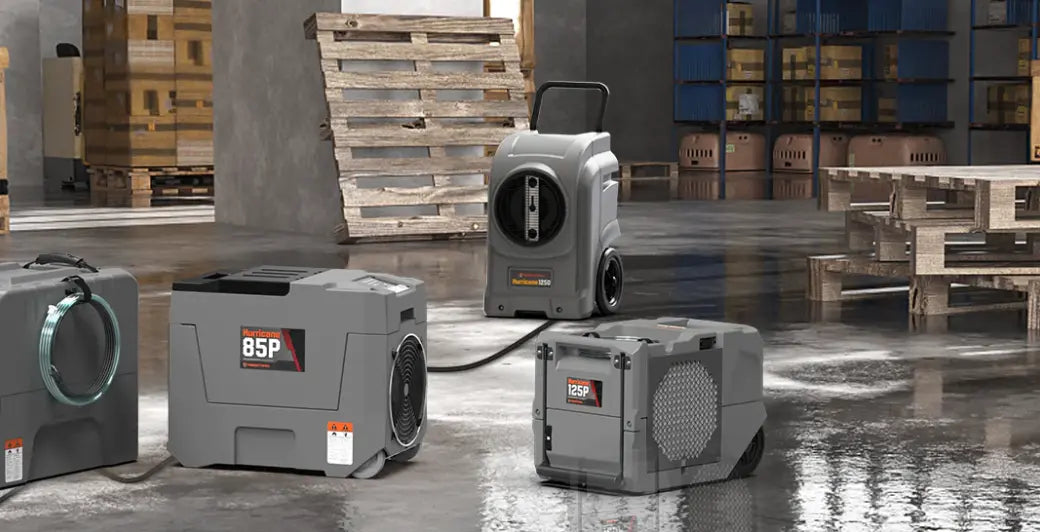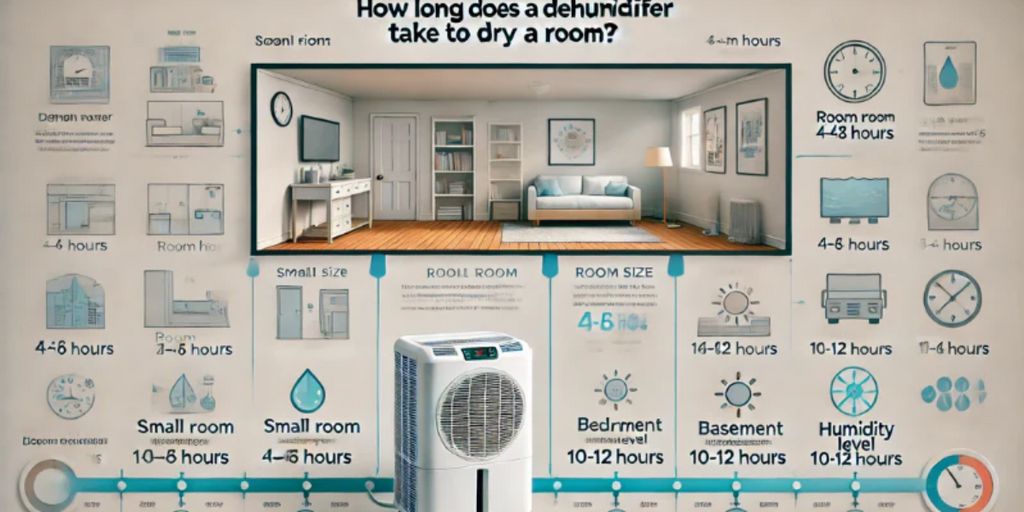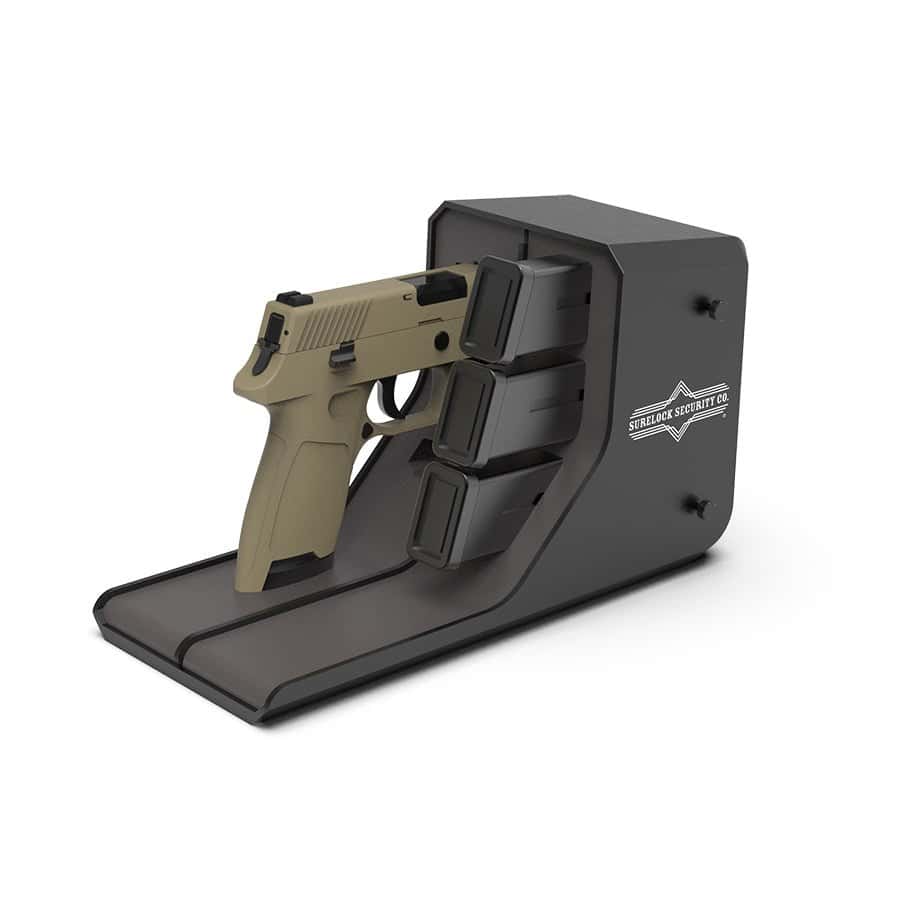Imagine walking into a room that feels like a swamp: sticky, uncomfortable, and downright oppressive. You know the culprit is excess moisture, and you’ve got a dehumidifier ready to tackle the job.
But now you’re wondering, how long will it take to transform this clammy space into a dry, comfortable haven? You’re not alone in your curiosity. Understanding how quickly a dehumidifier can work its magic is crucial for setting realistic expectations and ensuring your space becomes inviting once again.
You’ll uncover the factors that determine the drying speed, helping you make the most of your dehumidifier’s power. Get ready to take control of your environment and breathe easy knowing you can achieve the perfect balance of comfort in your room.
Factors Affecting Dehumidifier Efficiency
Understanding how long a dehumidifier takes to dry a room involves many factors. Each factor plays a crucial role in determining its efficiency. Let’s delve into these factors for a clearer picture.
Room Size And Dimensions
The size and shape of a room affect dehumidifier performance. Larger rooms take longer to dry. Smaller rooms dry quicker. High ceilings add extra volume, slowing the process. Consider these when choosing a dehumidifier.
Humidity Levels
Initial humidity levels greatly influence drying time. High humidity demands more time. Low humidity allows faster drying. Monitor the room’s initial moisture levels for best results.
Dehumidifier Capacity
A dehumidifier’s capacity directly impacts drying efficiency. Larger capacity units extract more moisture. Smaller units may struggle with bigger spaces. Match the dehumidifier’s capacity with room needs.
Temperature Variations
Temperature affects how a dehumidifier performs. Warm air holds more moisture. Cold air holds less. Dehumidifiers work better in warmer environments. Keep room temperature consistent for optimal results.
Types Of Dehumidifiers
Understanding the different types of dehumidifiers can help you choose the best one for your needs. Each type works differently and has its own advantages. Let’s explore the various dehumidifiers available on the market.
Refrigerant Dehumidifiers
Refrigerant dehumidifiers, often called compressor dehumidifiers, are common in households. They work by cooling air to extract moisture. As air passes over cold coils, water droplets form. These droplets are collected in a tank. This type is effective in warm and humid climates. It performs best above 60°F.
Desiccant Dehumidifiers
Desiccant dehumidifiers use moisture-absorbing materials. These materials capture water from the air. Unlike refrigerant types, they don’t need cold coils. Desiccant dehumidifiers are ideal for cooler temperatures. They work well even below 60°F. They are quiet and often compact.
Thermoelectric Dehumidifiers
Thermoelectric dehumidifiers use the Peltier effect. This effect cools one side of a device and heats the other. Moist air hits the cool side, forming droplets. These droplets are collected in a tank. Thermoelectric dehumidifiers are quiet and energy-efficient. They suit small spaces and mild humidity.
Optimal Placement For Fast Results
Placing your dehumidifier correctly ensures it works effectively. The right spot reduces drying time, saving energy and time. Consider a few key factors for optimal placement.
Centralized Location
Position the dehumidifier in the room’s center. This allows it to draw moisture evenly from all areas. A central location promotes better airflow and efficiency. It ensures all corners of the room benefit equally.
Avoiding Obstructions
Keep the dehumidifier away from furniture and walls. These can block airflow and reduce efficiency. Ensure at least a foot of space around the unit. This space allows air to circulate freely. Clear paths help the device work at its best.
Distance From Moisture Sources
Place the dehumidifier near moisture sources. These include bathrooms and kitchens. This placement tackles humidity at the source. It reduces the overall moisture level quicker. Addressing moisture directly improves drying speed.

Estimating Time For Different Scenarios
Estimating how long a dehumidifier takes to dry a room depends on several factors. Room size, humidity levels, and dehumidifier capacity play crucial roles. Understanding these can help you get the most out of your dehumidifier. Let’s explore how these factors affect drying time in different scenarios.
Small Rooms
Small rooms dry faster with a dehumidifier. A compact room might take 2 to 4 hours. This is because less air volume needs moisture removal. Make sure to close windows and doors for quicker results. A dehumidifier with a capacity of 30 pints is effective for small spaces.
Large Spaces
Large spaces require more time to dry. Expect drying to take 6 to 8 hours. The dehumidifier works harder in bigger areas. Using a dehumidifier with a capacity of 50 pints or more helps. Keep air circulation steady for efficient moisture removal.
Basements And Crawl Spaces
Basements and crawl spaces often have high humidity. Here, drying may take 8 to 12 hours. These areas usually have poor ventilation. A dehumidifier with a capacity of 70 pints is recommended. Ensure proper placement for effective moisture control.
Impact Of External Factors
Dehumidifiers dry rooms at different speeds due to factors like room size and humidity levels. Weather conditions impact drying time significantly. Proper positioning ensures optimal performance and quicker results.
When using a dehumidifier to dry a room, you might wonder why it takes longer at times. The answer often lies in external factors influencing the dehumidifier’s efficiency. Understanding these factors can help you optimize the drying process and achieve a more comfortable living space.
Weather Conditions
Weather plays a crucial role in how long a dehumidifier takes to dry a room. On humid days, the air holds more moisture, so your dehumidifier needs to work harder. Conversely, during dry weather, the dehumidifier operates more efficiently, reducing drying time. Imagine using a dehumidifier during a rainy day. The extra moisture in the air means your device has to extract more water, prolonging the drying process. It makes sense to consider the weather forecast before deciding to run your dehumidifier.
Ventilation And Airflow
Proper ventilation and airflow can significantly impact the drying time. A well-ventilated room allows the dehumidifier to function more effectively. Improved airflow helps the dehumidifier pull in moist air and release dry air, speeding up the drying process. Think about a stuffy room with closed windows and doors. Your dehumidifier will struggle as it recycles the same moist air. By opening a window or using a fan, you can enhance airflow, aiding the dehumidification process.
Building Materials And Insulation
The materials your home is built with can also affect how long it takes to dry a room. Materials like concrete and brick retain moisture longer, requiring more time for a dehumidifier to dry the space. Good insulation helps in keeping moisture levels stable, allowing the dehumidifier to work efficiently. Consider a room with poor insulation and damp walls. The dehumidifier will need extra time to remove moisture absorbed by these materials. If you’re building or renovating, choosing materials that resist moisture could be a smart move for faster drying times. Next time you switch on your dehumidifier, take note of these external factors. Are you making the most of your dehumidifier’s capacity? Adjust your approach according to weather conditions, airflow, and building materials for optimal results.

Expert Tips For Faster Dehumidification
Expert tips can speed up your dehumidification process significantly. Knowing how to optimize your dehumidifier’s performance can make a big difference. With the right strategies, you can dry your room faster and more efficiently. Dive into these expert tips to enhance your dehumidifying efforts.
Pre-drying Preparations
Begin by sealing windows and doors tightly. This prevents outside moisture from entering. Clear the room of wet items like towels or clothes. They can slow down the drying process. Move furniture away from walls to improve air circulation. Proper setup is crucial for effective dehumidification.
Maximizing Efficiency
Place the dehumidifier centrally in the room. This allows it to cover more area. Adjust the humidity settings to a lower level for faster results. Use a fan to help circulate air. Air movement assists the dehumidifier in removing moisture. Keep curtains open to let sunlight in. Natural heat aids in moisture evaporation.
Regular Maintenance
Clean the dehumidifier’s filter frequently. Dust can block airflow, reducing efficiency. Check the water tank regularly. Empty it when full to keep the unit running smoothly. Inspect the coils for any buildup. Clean them to maintain optimal performance. Routine maintenance ensures your dehumidifier works at its best.
Common Mistakes To Avoid
Using a dehumidifier can make a world of difference in achieving a comfortable and dry room environment. However, common mistakes can hinder its effectiveness and leave you wondering why your room isn’t drying as expected. Addressing these pitfalls can optimize your dehumidifier’s performance and ensure you get the most out of your investment. Let’s dive into some common mistakes to avoid.
Ignoring Manufacturer Instructions
Many users skip reading the manufacturer’s instructions, assuming they know how to operate their dehumidifier intuitively. This oversight can lead to improper use and reduced efficiency. The instructions often contain crucial information about optimal settings and maintenance routines.
Consider a time when you assembled furniture without looking at the manual. Things might have fit together, but not as securely or efficiently as they should. Similarly, your dehumidifier may work, but not at its best. Taking a few minutes to review the guidelines can save hours of frustration and ensure your dehumidifier runs smoothly.
Overloading The Dehumidifier
Do you often place your dehumidifier in large areas expecting it to dry every corner? Overloading it can lead to subpar results. Each model is designed to handle specific room sizes and humidity levels. Trying to dry a larger space than recommended can overwork the device.
Think about trying to fill a bathtub with a garden hose—eventually, the water may get there, but not efficiently or quickly. A better approach is to focus on smaller areas or invest in a larger capacity unit. Check the dehumidifier’s specifications and ensure your room size matches its capacity.
Neglecting Filter Cleaning
When was the last time you cleaned your dehumidifier’s filter? A clogged filter reduces airflow and efficiency, much like trying to breathe through a straw. Regular filter maintenance is crucial for optimal performance. Dust and debris can accumulate quickly, hindering your dehumidifier’s ability to function effectively.
Set a reminder to check and clean the filter every month. This simple task can drastically improve air quality and drying efficiency. If you haven’t cleaned it in a while, now is a good time to start. You’ll likely notice an improvement in both air circulation and humidity reduction.
Are you guilty of any of these common mistakes? Avoiding them can save you time, energy, and frustration, ensuring your dehumidifier works at its best to keep your space comfortable and dry.
Signs Your Room Is Effectively Dehumidified
A well-dehumidified room feels comfortable and fresh. Moisture levels stay low, preventing musty odors. Dry air helps furniture and walls remain in good condition. A dehumidifier typically takes several hours to effectively dry a room. Check humidity levels with a hygrometer to ensure optimal air quality.
Knowing when your dehumidifier has effectively dried a room can save you energy and time. You’ll want to ensure your space is not only free of excess moisture but also comfortable and healthy. How do you know when you’ve reached that sweet spot of dryness? Look out for these tell-tale signs that your room is effectively dehumidified.
Reduced Dampness
One of the first signs of effective dehumidification is a noticeable reduction in dampness. Have you stopped feeling that clammy sensation on your skin when you enter the room? If your floors, walls, and furniture feel dry to the touch, your dehumidifier is likely doing its job well. Imagine walking barefoot on your carpet and feeling a soft, dry surface rather than a cold, moist one. It’s a reassuring sign of a balanced humidity level.
Improved Air Quality
When a room is properly dehumidified, the air feels lighter and easier to breathe. Do you find yourself breathing more freely, even without opening a window? This is because excess moisture can trap pollutants and allergens, making the air feel heavy. Improved air quality means you can enjoy spending time in your room without worrying about irritating your allergies or triggering respiratory issues. It’s a small change that makes a big difference in your daily life.
Absence Of Musty Odors
Have you noticed that old, musty smell is finally gone? A musty odor is a common sign of mold and mildew, which thrive in humid environments. When your dehumidifier effectively dries the room, these unpleasant smells should diminish or disappear entirely. Picture this: stepping into your basement and smelling nothing but the fresh scent of clean air. It’s a welcome change that indicates your dehumidifier is working hard behind the scenes. Have you experienced any of these signs in your home? Recognizing these changes not only helps you maintain a comfortable living space but also keeps your home healthy and safe. What other benefits have you noticed from using a dehumidifier? Share your experiences and insights in the comments!

Frequently Asked Questions
Will A Dehumidifier Pull Moisture Out Of Walls?
A dehumidifier reduces air moisture, which can help dry walls indirectly. It won’t directly extract moisture from walls. For severe dampness, consider additional methods like ventilation or professional assessment. Keep humidity levels balanced to prevent future moisture problems.
How Long Does A Room Stay Dry After A Dehumidifier?
A room stays dry as long as humidity levels remain controlled. This can vary based on room size, weather, and dehumidifier efficiency. Regular use maintains dryness, but checking humidity levels is essential for optimal results.
Should A Dehumidifier Run All Day?
A dehumidifier doesn’t need to run all day. Use it until the desired humidity level is reached. Monitor humidity levels and adjust usage accordingly. Running it continuously may increase energy costs. Maintain optimal indoor humidity between 30-50% for comfort and health.
Does A Dehumidifier Take Moisture Out Of A Room?
Yes, a dehumidifier effectively removes moisture from a room, reducing humidity levels. It draws in air, extracts excess moisture, and releases drier air. This process helps prevent mold growth and improves air quality, making the environment more comfortable. Ideal for damp spaces, dehumidifiers enhance indoor comfort.
Conclusion
A dehumidifier can dry a room efficiently. Time varies based on size and humidity. Smaller rooms dry faster. Larger spaces need more time. Choosing the right dehumidifier matters. Consider capacity and room size. Keep doors and windows closed. This speeds up the process.
Regularly check and empty the water tank. This ensures optimal performance. Be patient and monitor progress. Notice improved air quality and comfort. Understanding your needs helps in achieving the best results. A dry room enhances overall well-being.



